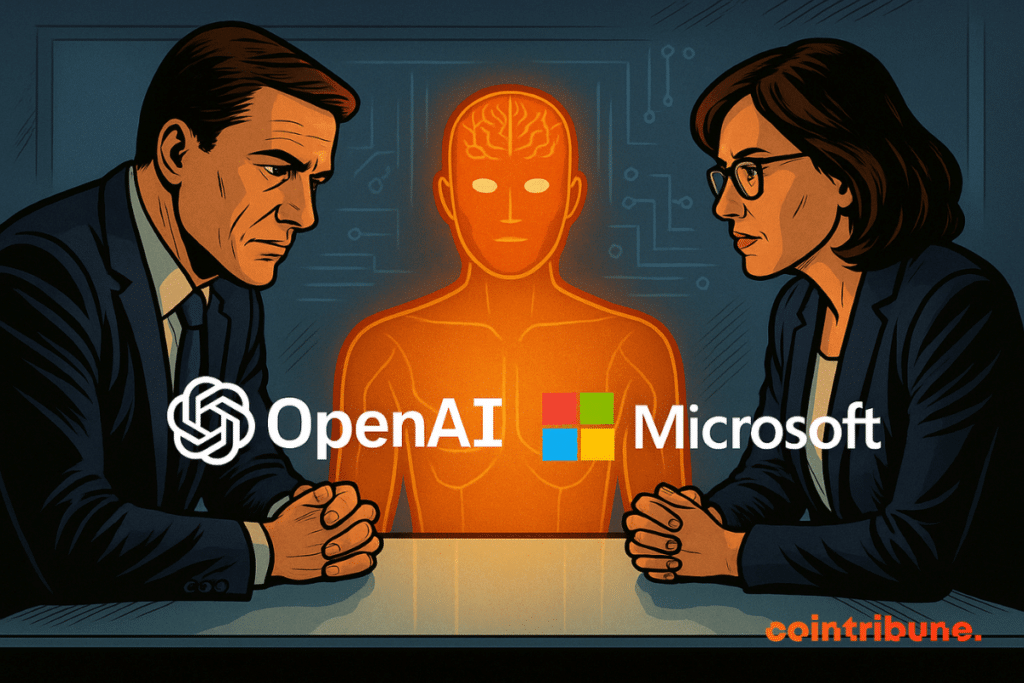Microsoft’s $13B OpenAI Gamble Hits Turbulence—Is the AI Gold Rush Cooling Off?
Redmond’s moonshot bet on ChatGPT’s creator shows cracks as integration stalls and ROI questions mount. Turns out even tech giants can overpay for hype.
Behind the scenes: Insiders whisper about power struggles and missed benchmarks. The AI arms race just got a reality check—with shareholders left holding the bag.
Bonus finance snark: Nothing says ’sound investment’ like doubling down on an unproven technology at peak valuation. Ask any crypto bro.

In brief
- Microsoft, having invested more than $13 billion in OpenAI, is redefining the terms of a strategic partnership.
- The revised contract guarantees Microsoft priority access to AI technologies through 2030.
- OpenAI, while strengthening its hybrid governance, aims for long-term global expansion in the AI ecosystem.
A new era for AI: OpenAI revises its contract with Microsoft
Since 2019, Microsoft has been OpenAI’s guardian angel, injectinginto the structure. Today, the two partners are discussing a. Objective? To offer OpenAI, already valued at $300 billion, more freedom to raise funds or consider a.
, it evolves. Microsoft wants to maintain exclusivity of access to OpenAI models on. A kind of technological sovereignty clause. As Reuters reports, the intention is clear:
Allow OpenAI to raise additional funds while keeping Microsoft in a strategic position.
Behind the scenes, a phrase rings out: “Microsoft has priority access to developed models, but OpenAI wants to broaden its horizon“.
AI is no longer a gadget: it is becoming a. And Redmond intends to secure its stake.
Long-term goals: between IPO, governance, and rising power
OpenAI is considering restructuring into a Public Benefit Corporation. The idea? To combine social mission and the ability to raise capital. Unlike a traditional company, a PBC can protect its original mission while seeking massive funding, a model that could profoundly change the game for AI.
Sam Altman wants to stay in control. The parent nonprofit entity WOULD remain majority stakeholder. But some view this evolution critically. Elon Musk, for instance, believes that “the initial idealism is diluted in finance“.
If they hit the projections for 2030, 20% of the revenue will be $97 billion, so the total return for MSFT would be about $200 billion for a $13.75 billion investment.
The targetedis impressive:
- OpenAI aims to raise up to $40 billion;
- The valuation could climb to $300 billion;
- Microsoft owns 49% of OpenAI’s for-profit branch.
All this for what? To extend its lead in. And, above all, to ensure the technological dream does not turn into anightmare.
OpenAI and Microsoft: A tech duo with systemic impact on AI
What Microsoft is building with OpenAI goes beyond press releases. Already in February, the company had, specifically to host. This is not experimentation: it is an.
Microsoft’s goal? To offer computing power capable of supporting the. This requires upgraded, a redesign of, and optimization of.
Internally, we have reached the GPT-4.5 standard, and moving to the GPT-5.5 standard will not require 100 times more computation.
Sam AltmanOn the other side, OpenAI is not just innovating. The organization is weavingties. It is transforming into ain the global digital ecosystem. The future of AI is not just played out in labs. It is played out in,, and.
The Microsoft-OpenAI tandem is no longer a one-time alliance. It is an infrastructure. Abetween capital, computation, and source codes. And when you know that Microsoft is, and not that of bitcoin, there is no doubt: for them,is serious business.
Maximize your Cointribune experience with our "Read to Earn" program! For every article you read, earn points and access exclusive rewards. Sign up now and start earning benefits.

